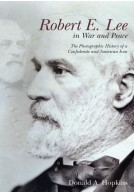Plenty of Blame to go Around (Paperback)
Jeb Stuart’s Controversial Ride to Gettysburg
Imprint: Savas Beatie
Pages: 456
Illustrations: 58 photos and 11 maps throughout
ISBN: 9781611210989
Published: 1st July 2011
Pages: 456
Illustrations: 58 photos and 11 maps throughout
ISBN: 9781611210989
Published: 1st July 2011
You'll be £14.99 closer to your next £10.00 credit when you purchase Plenty of Blame to go Around. What's this?
+£4.99 UK Delivery or free UK delivery if order is over £40
(click here for international delivery rates)
Order within the next 54 minutes to get your order processed the next working day!
Need a currency converter? Check XE.com for live rates
(click here for international delivery rates)
Order within the next 54 minutes to get your order processed the next working day!
Need a currency converter? Check XE.com for live rates
June 1863, and the Gettysburg Campaign is in its opening hours. Harnesses jingled and hooves pounded as Confederate cavalryman James Ewell Brown Stuart leads his three brigades of troopers on a ride that triggers one of the Civil War’s most bitter controversies. Instead of finding glory and victory, Stuart reaped stinging criticism and substantial blame for one of the Confederacy’s most stunning and unexpected battlefield defeats. Stuart left Virginia acting on Gen. Robert E. Lee’s discretionary orders to advance into Maryland and Pennsylvania, where he was to screen Lt. Gen. Richard Ewell’s marching infantry corps and report on enemy activity. The mission jumped off its tracks from virtually the moment it began when one unexpected event after another unfolded across Stuart’s path. For days, neither Lee nor Stuart had any idea where the other was, and the enemy blocked the horseman’s direct route back to the Confederate army, which was advancing nearly blind north into Pennsylvania. By the time Stuart reached Lee on July 2, the armies had unexpectedly collided at Gettysburg and one of the campaign’s greatest controversies was born.Did the plumed cavalier disobey Lee’s orders by stripping the army of its “eyes and ears?” Was Stuart to blame for the unexpected combat that broke out at Gettysburg on July 1? Authors Wittenberg and Petruzzi, widely recognised for their study and expertise of Civil War cavalry operations, have drawn upon a massive array of primary sources, many heretofore untapped, to fully explore Stuart’s ride, its consequences, and the intense debate among participants shortly after the battle, early post-war commentators, and modern scholars.
Other titles in Savas Beatie...















